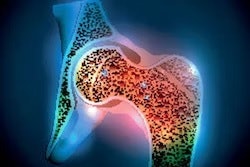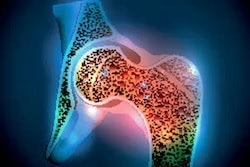Puberty suppression treatment in transgender adolescents followed by the use of long-term gender-affirming hormones appears safe regarding bone health, according to a study published October 30 in JAMA Pediatrics.
A group in the Netherlands analyzed bone scans in participants and found that while gonadotropin-releasing hormone (GnRH) agonists suspend bone mineral accrual in adolescence, levels mostly catch up later during gender-affirming hormone treatment. The findings may allay concerns over possible increased risk of osteoporosis in these patients, the authors suggested.
“While treatment with puberty suppression for adolescents diagnosed with gender dysphoria has become controversial, especially because of questions about the long-term safety, we presented evidence that GnRH agonist treatment is generally safe regarding bone health,” wrote first author Maria Anna Theodora Catharina van der Loos, MD, of Amsterdam University Medical Center, and colleagues.
The use of GnRH agonists in the treatment of transgender adolescents is relatively new, with the approach introduced in the Netherlands around 2000, the authors noted. The treatment is used as a means of puberty suspension to lighten the burden of undesired physical changes in transgender adolescents and extends time for exploring treatment wishes with subsequent gender-affirming hormones (GAH), they wrote.
However, GnRH agonists have been shown to reduce bone mineral density (BMD) in other patients, and evidence on long-term bone health in transgender adolescents treated with a GnRH agonist and subsequent GAH is limited, they added.
To that end, the researchers studied dual-energy x-ray absorptiometry (DEXA) scans to BMD in transgender adults who started medical transition with a GnRH agonist before the age of 18 and had subsequently used GAH for at least nine years. Results were based on DEXA BMD z-scores, the current gold standard for assessing bone health. To assess change over time, retrospective DXA scans were collected from medical records and compared with follow-up scans.
Among 75 participants, 25 were assigned male at birth, and 50 were assigned female at birth. Both groups had a median age of 28.2 years at long-term follow-up. The median duration of GAH treatment for both groups was approximately 12 years.
In participants assigned male at birth, z-scores were already lower than normal at the start of GnRH agonist treatment, the authors noted. BMD remained stable during GnRH agonist treatment, yet during GAH treatment, z-scores at the total hip and femoral neck increased.
In participants assigned female at birth, BMD z-scores decreased after the start of GnRH agonist treatment, yet during GAH treatment, z-scores increased, with the analysis revealing similar z-scores at follow-up compared with the start of GnRH agonist treatment.
“Bone mineral accrual is temporarily suspended by the use of puberty suppression but, due to an increase during GAH treatment, BMD catches up with pretreatment levels at long-term follow-up,” the group wrote.
The authors wrote that to their knowledge, this study is the first to report on long-term bone health in transgender adolescents treated with a GnRH agonist and subsequent long-term GAH treatment. As such, it yields new and important data, they wrote.
In future work, they noted that the natural course of BMD development in transgender people should be studied on DEXA scans because BMD z-scores before the start of GnRH agonist treatment were already decreased in participants assigned male at birth.
“Given the results of our study, monitoring of BMD using DXA scans is not necessary in individuals assigned female at birth who started treatment in late puberty, but follow-up with DXA remains important in those assigned male at birth,” the group concluded.
A link to the full article can be found here.



















